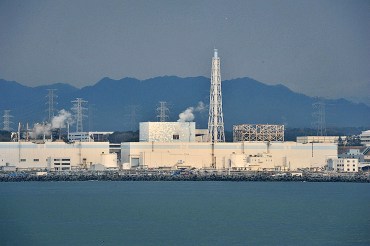Resource-poor Japan has long fretted over its dependence on energy imports. The 1973 oil crisis which triggered oil price spikes and toilet paper panic-buying remains seared in collective memory. The 2011 Fukushima accident and 2022 Russian invasion of Ukraine are further unwanted reminders of Japan’s energy security frailties.
Former foreign affairs minister Toshimitsu Motegi once highlighted that “in the field of energy security, we depend on the Middle East to secure ninety per cent of our crude oil needs, and that is why we consider peace and stability of the Gulf Cooperation Council countries vital and extremely important for us.”
One of Japan’s first responses after Russia invaded Ukraine on February 24, 2022, was to double down on long-standing relationships with the United Arab Emirates (UAE) and Saudi Arabia — leading suppliers of oil to Japan.
On March 17, 2022, Prime Minister Fumio Kishida had a telephone call with Saudi Arabia’s Crown Prince Mohammed Bin Salman wherein both had “an intense discussion on countermeasures against oil price increases.”
In an earlier call with Sheikh Mohamed bin Zayed al-Nahyan, then the crown prince of Abu Dhabi and now UAE president, Kishida similarly requested UAE assistance in stabilizing the international oil market. Phoning up Qatar’s emir, Sheikh Tamim bin Hamad al-Thani, Kishida sought cooperation in stabilizing the liquefied natural gas (LNG) market — Qatar is Japan’s top LNG supplier.
These phone calls were to be followed by Kishida’s in-person visits to Qatar, the UAE and Saudi Arabia in August 2022, which were called off because Kishida contracted Covid-19. In mid-July 2023, Kishida finally made this trip.
Diversifying Japan’s energy mix has been another plank of Japan’s response. Russian aggression against Ukraine nudged Japan back towards nuclear energy — a politically sensitive issue after the 2011 Fukushima reactor meltdown. In August 2022, Kishida announced Japan would restart idled nuclear plants while looking into extending the lifespans of existing ones beyond 60 years.

Anti-nuclear public sentiment has waned in the face of surging energy bills and power shortage warnings. These energy challenges have been triggered not only by the Ukraine war but also by climate change-induced weather events such as recurrent summer heatwaves. Nuclear power is increasingly framed as part of Japan’s “green transformation” to hit net zero targets by 2050 first announced in 2020 by former prime minister Yoshihide Suga.
In May 2023, France and Japan signed an agreement to cooperate in the research and development of next-generation nuclear plants such as sodium-cooled fast reactors. Japan’s Minister of Economy, Trade and Industry, Yasutoshi Nishimura, declared that the partnership was about “decarbonization and a stable energy supply.” Shutdowns of thermal power plants burning fossil fuels have also added to the pressures on energy grids.
The Ministry of Economy, Trade and Industry has touted LNG as a cleaner source of energy with lower emissions. Japan is the world’s largest importer of LNG and has announced plans to build a strategic LNG buffer against the risk of disruptions. LNG is primarily sourced from Qatar but other sources of energy in Southeast Asia are also being pursued.
Brunei has long supplied oil to Japan, but it also contributes 6 per cent of Japan’s LNG needs. This is set to grow after Brunei LNG signed an LNG supply agreement with Japan Petroleum Exploration Company in April 2023. Other forms of cleaner energy sources being developed include blue ammonia supply chains with the UAE.
Renewables are meant to contribute 36–38 per cent of the power supply by 2030. But there have been several notable cancellations of wind farm projects by trading companies Sojitz, Kansai Electric Power and Hitachi Zosen due to rising costs of materials and local community opposition.
Japan has also adopted a hedging stance to manage its energy dependency. Although Iran is no longer a significant energy supplier to Japan, an outright US–Iran military conflict would upend Japan’s energy flows from the Gulf region. Japan’s 2020 Diplomatic Bluebook outlined Tokyo’s desire to alleviate tensions by ‘leveraging its position as an ally with the US, and, at the same time, its positive and long-standing relationship with Iran’.
This explains former prime minister Shinzo Abe’s visit to Tehran in 2019, the deployment of Maritime Self-Defense Force destroyers in 2020 for information gathering missions independent of the US-led coalition and restricting the geographical scope of operations to outside the Strait of Hormuz. Japan has also maintained its stake in the Sakhalin-2 oil fields, balancing its energy security needs while strongly condemning Russian aggression.
Doubling down, diversifying and hedging to maintain its energy supply, Japan has had to cope with the vagaries of power politics. As climate change worsens, the need to achieve net zero targets constitutes yet another variable in Japan’s complex calculus.
Yee-Kuang Heng is a professor of international security in the Graduate School of Public Policy at the University of Tokyo, and was visiting researcher and senior academic visitor in the Center for the Study of Existential Risk at the University of Cambridge (2022).
This article was originally published by East Asia Forum. It is republished under a Creative Commons license.

